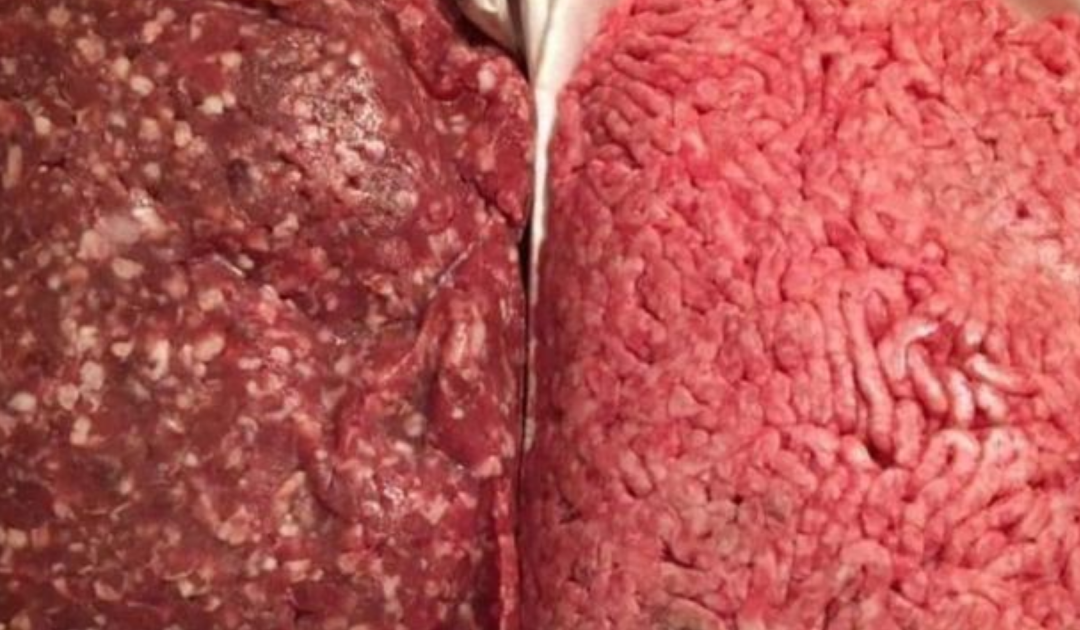Beef might look the same, but where it comes from makes a big difference. Learn what sets store-bought beef apart from farm-raised options.
When you walk into a grocery store to pick up beef, you might notice that it looks quite different from what you’d find at a farmer’s market or a local farm.
But what’s really behind those differences, and why should they matter to you?
While the visible distinctions are easy to spot, there’s a deeper story to uncover — one that involves taste, texture, health, and even the environment.
The gap between store-bought beef and farm-raised beef is wider than it seems.
Let’s explore what separates these two types of beef and why understanding where your food comes from can make a big impact on your meals, your health, and even the planet itself.

1. Appearance: What You See Matters
The first thing you’ll notice when comparing store beef to farm-raised beef is how they look. Typically:
Store-bought beef has a consistent, bright red color that’s achieved through specific preservation techniques. Methods like vacuum sealing or the use of gases help maintain this uniform appearance and extend its shelf life.
Farm-raised beef, often labeled as grass-fed or pasture-raised, looks darker and more varied in color. The fat is often yellowish, which comes from the beta-carotene in the grass that cows eat. This natural appearance reflects the cow’s diet and lifestyle, giving you an idea of how it was raised.
Though these visual differences might seem small, they tell a story about the cattle’s diet, care, and the processing methods used to prepare the beef.
2. Diet: Grass-fed vs. Grain-fed
Store Beef (Grain-Fed): Most beef sold in grocery stores comes from cows raised on grain-based diets in feedlots. These diets, rich in corn and soy, help cows gain weight quickly. While this method results in attractive-looking meat, it lacks the nutritional benefits of grass-fed beef. Grain diets are far from what cows naturally eat, impacting the beef’s nutrient content.
Farm Beef (Grass-Fed/Grass-Finished): Grass-fed beef comes from cows that graze on grass and herbs, producing meat that’s leaner, darker, and loaded with omega-3 fatty acids, antioxidants, and vitamins. This beef is lower in unhealthy fats and offers a richer, more distinct flavor. Additionally, grass-fed beef is often seen as a more ethical and eco-friendly choice because the cattle are raised in open pastures with fresh air and a natural lifestyle.
3. Fat Content: Fat is Flavor
Fat isn’t just about taste — it also affects the meat’s texture and tenderness.
Store Beef (Grain-fed): Grain-fed beef is known for its marbling, which means fat is evenly distributed throughout the muscle tissue. This creates a tender, juicy texture that many people are familiar with. However, the fat in grain-fed beef is higher in saturated fats and is typically bright white.
Farm Beef (Grass-fed): Grass-fed beef is leaner, with less marbling and lower overall fat content. The fat it does have is yellowish in color, thanks to the cow’s grass-based diet, and is packed with healthy omega-3 fatty acids and conjugated linoleic acid (CLA). Though it can be firmer and slightly chewier, many find the flavor cleaner and more satisfying.
4. Flavor Profile: Taste is King
When it comes to taste, many people argue that farm-raised beef has a more complex and robust flavor. Grass-fed beef, with its natural diet, delivers an earthy, slightly tangy taste that’s often described as more “beefy.”
Store-bought beef, on the other hand, has a milder and sweeter flavor. This is a result of the grain-fed diet and the processing methods used, which are designed to appeal to a broader range of palates. While the flavor may be less intense, it’s consistent and familiar to most consumers.

